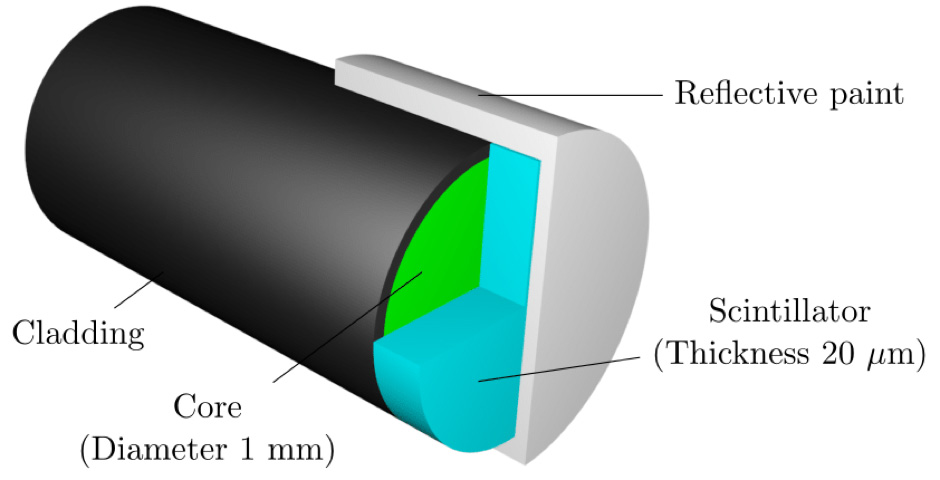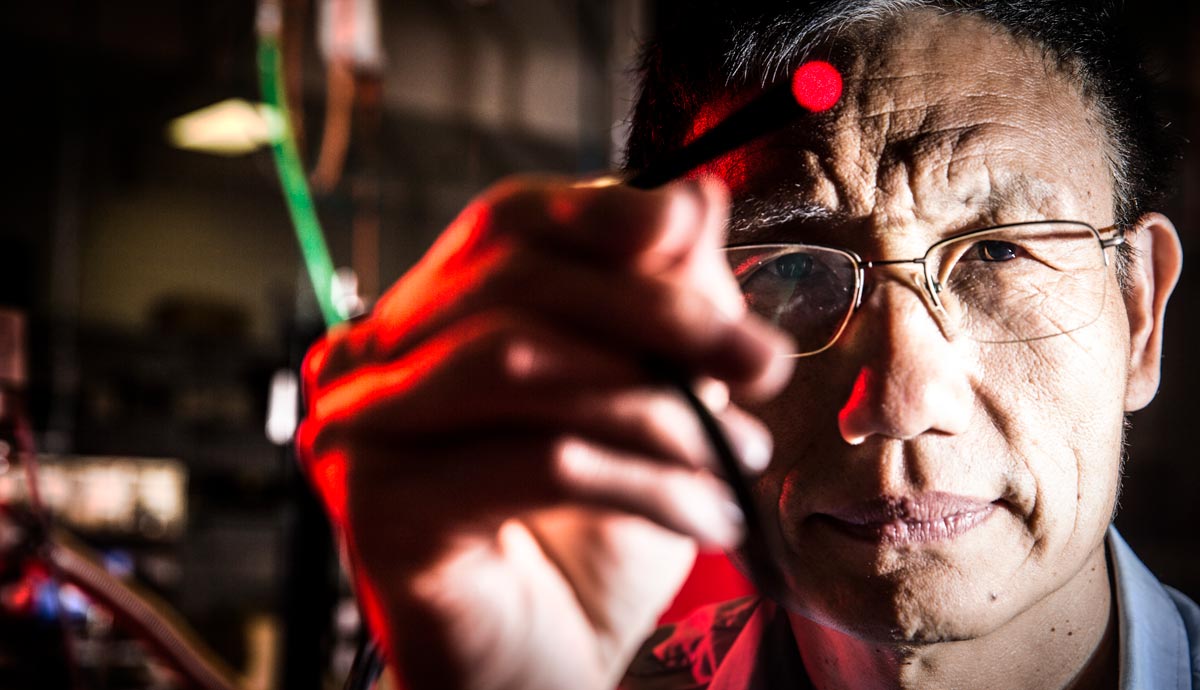November 24, 2017
Fibre-optic breakthrough for brain tumour treatment
Tiny sensor has huge potential for treating otherwise inoperable brain cancers.
University of Wollongong (UOW) researchers have successfully fabricated and tested a fibre-optic sensor the thickness of a human hair that could be a vital step in making an emerging radiotherapy treatment for brain tumours a reality.
Microbeam radiation therapy (MRT) is a cancer treatment technology that will enable more accurate treatment of cancers, such as brain tumours, to ensure the cancerous tissue is destroyed while not harming the surrounding healthy tissue.
Unlike conventional therapy that bathes the target area in radiation and has the risk of irradiating nearby healthy tissue, MRT uses parallel beams of x-rays - each smaller in diameter than a human hair - that cover the tumour in a precise pattern.
This allows not only more precise targeting of dosages, but also a higher dosage to the tumour site.
The issue holding back the introduction of MRT in cancer therapy is the need for quality assurance tools that can accurately detect the radiation dosage to ensure patient safety.
UOW’s Centre for Medical Radiation Physics (CMRP) has successfully pioneered different dosage measurement tools for conventional therapy; it has now also added a new photonic detection device capable of measuring the dosage emitted by each of the micron-thin beams.
The photonic scintillator, or light sensitive device, combines plastic and optic fibres, materials that mimic human tissue, satisfying a fundamental requirement of dosage detection.
The dosimeters use plastic scintillators as the radiation conversion material and plastic optical fibres as the transmission media. The photon detector is just 50 microns thick.
Dr Enbang Li from UOW’s School of Physics said a key challenge for the researchers was to reduce the thickness of the scintillator to enable it to detect the microbeams, while at the same time being large enough to produce an accurate and reliable measurement signal.
“The thickness of the scintillator, or detector, need to be reduced to less than the single beam size, which would significantly reduce the number of photons generated by the scintillator and hence make the photo-detection an extremely challenging task,” Dr Li said.

In order to increase the spatial resolution further, a 20 micron-thick fibre-optic dosimeter has also been developed and tested and the results will be published soon.
The device development adds to the 15-year CMRP research program for the development of a new radiation oncology method for the treatment of otherwise untreatable brain cancers and is a vital step in accelerating the application of MRT in cancer treatment.
“The results we have achieved so far demonstrate significant steps towards the development of optical dosimeters with the potential to be applied in quality assurance of microbeam radiation therapy, which is vital if clinical trials are to be performed on human patients,” Dr Li said
“The preclinical trials of MRT have shown that normal tissue can tolerate peak doses 100 times greater than the doses used in conventional radiotherapy.
“An entire tumour could be destroyed with MRT while with significantly reduced damage to adjacent normal tissues.
“Although the cellular mechanisms behind MRT are currently unknown and still under investigation, the superior outcomes of MRT have made it as a promising cancer treatment that might be applied in the treatment of brain tumours in children where conventional radiation therapies have a high risk to nervous system development.
“MRT represents a new paradigm in radiotherapy and has the potential to become widely available in the future.”
The final goal is to design and construct fibre-optic dosimeters with 10-micron spatial resolution.
The successful fabrication and testing of the device was published recently in the journal Scientific Reports and is a joint research project between UOW’s Centre for Medical Radiation Physics and the Australian Synchrotron.
